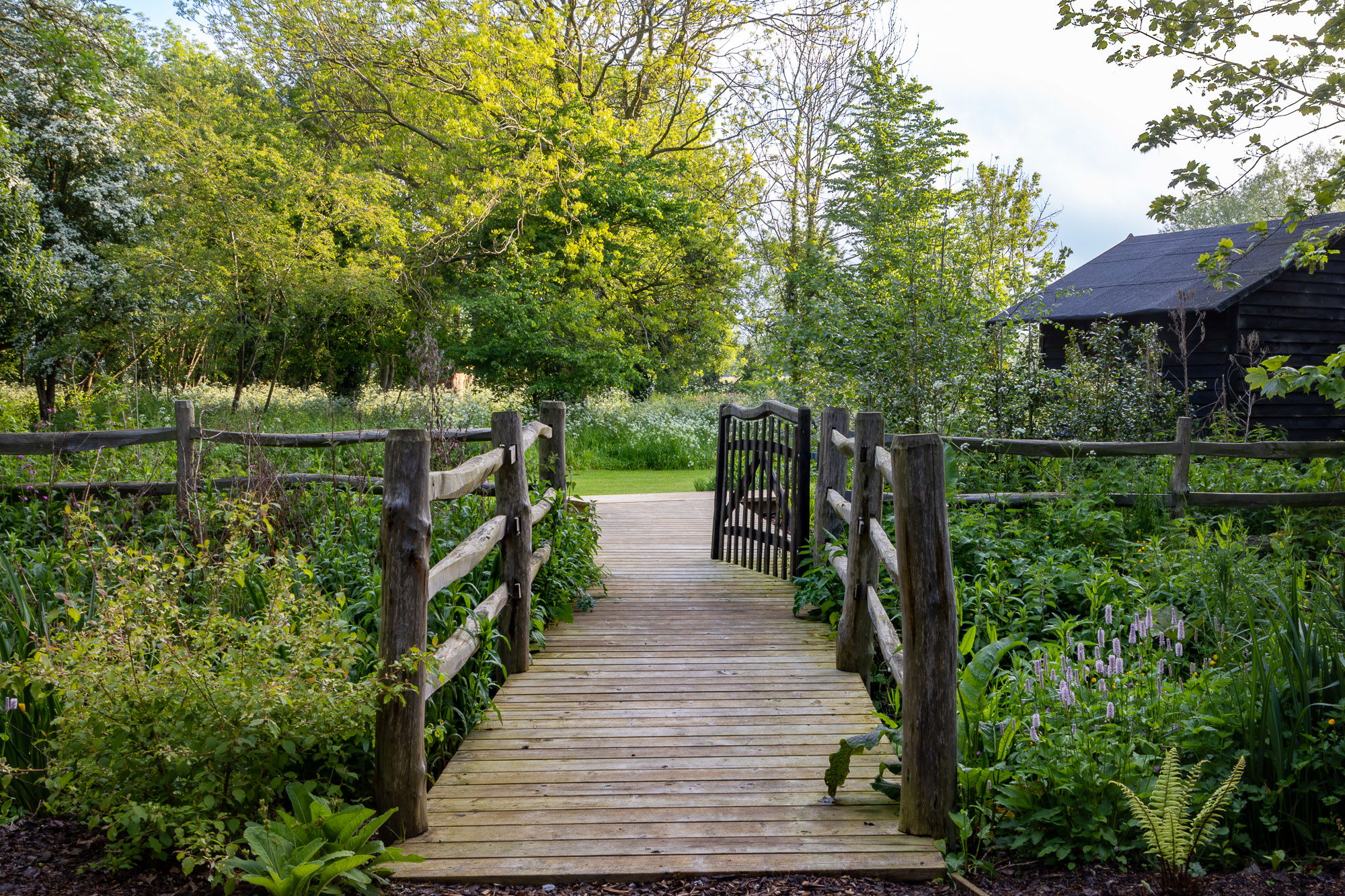
Achieving Biodiversity Net Gain in New UK Planning Regulation 2024.
Biodiversity Net Gain came into UK planning regulation earlier this year. Mark Latchford, HollandGreen’s Director of Landscape Design, explains what it involves and discusses his award-winning garden which followed its principles.

Biodiversity Net Gain.
Biodiversity Net Gain (BNG) became mandatory in UK Planning in February 2024. This new approach sets out to protect and support the natural environments of our animal and insect populations, creating more and better natural habitats for them to flourish and giving them the support they so critically need.
We’re delighted, but this is not a new standard for us.
As landscape designers, we have followed an ecological approach to design since we began in 2019. We believe by enhancing the biodiversity of a site, we also symbiotically create a garden which connects our clients with nature, inspires wellbeing and provides the backdrop for wonderful moments and memories.
Last year we were honoured in winning the Domestic Design Project of the Year at the inaugural Prolandscaper Sustainability & Biodiversity Awards 2023 for one of our gardens. Meadow View Wildlife Woodland is a project close to our hearts, a scheme which embraced the principles of the new planning BNG standard well over 4 years ago when the garden’s inception began.


But first, a bit more on BNG.
Biodiversity Net Gain (BNG) mandates that developers must ensure the wildlife habitats on a site are left in a ‘measurably better state’ than they were before the development started. Under the Town and Country Planning Act 1990, BNG stipulates a site is calculated to contain a number of ‘biodiversity units’ based on its size, location, type and quality. Developers must demonstrate to the Local Planning Authority, working with an ecologist and to the Government’s biodiversity calculator, that they will deliver a BNG of at least 10% – meaning the development will result in 10% of more, or better quality, natural habitat for wildlife.
A 30 Years’ Threshold.
A key feature of the regulation is that the new biodiversity levels are held above the 10% threshold for at least 30 years – longevity being a key principle to wildlife habitats protection. This doesn’t come without its challenges. It can be difficult to measure the biodiversity improvements, and even more so to show they will be there for at least 30 years. Another key challenge is around site limitations and how to find a 10% gain if there is limited space. However, by holding the industry to this high standard, BNG is transformative and puts ecology at the heart of shaping our built environments with sustainable, resilient and vibrant ecosystems. I really believe, when it comes to residential home design, this means gardens will become more joyful spaces.

A Case Study in BNG Principles.
Our design of this garden won the first ever Domestic Design Project of the Year, Prolandscaper Sustainability & Biodiversity Awards, 2023.
Meadow View in Oxfordshire looked like an unkept field surrounded by an unmanaged woodland when our client purchased the land to the rear of their home. It already embodied a wealth of biodiversity and we wanted to take this further whilst creating an enjoyable and tranquil space. Our goal was to work with – and enhance – the existing site and its ecosystem, rather than impose an unsuitable strategy upon it.
We started with thorough analysis, collecting data from the site and developing the design liaising with Natural England, local ecologists, tree specialists, council officers and planning consultants.
Great Crested Newts were discovered, a protected species, and the scheme was crafted to enhance their habitat, including creating a pond from an old clay pit in the middle of the meadow.
We enriched the woodland with native trees including birch and hornbeam. The wildflower meadow was sown with a 100% native, bee and butterfly mix amongst the cow parsley and nettles. We found the remnants of an old cottage in the woodland, which we reimaged by creating a gothic folly as a ‘moment of discovery’ on the trail. In planning these, the scheme took a distinctive shape before considering zones or key views – we simply created meandering paths to reach each distinct area of the garden, with seating to give an immersive feeling with nature.


The Garden’s Build.
No waste arising from the build was removed from site. Digs outs forming the pond were reused to create hibernaculas for reptiles and amphibians, and dead or fallen trees were felled and used to create decorative log piles, stumperies and edging for woodland paths. Large areas of cow parsley and nettles were protected to protect the garden’s existing biodiversity and cut-offs from turf were added to log piles, creating small environments which ants and woodlice particularly love. Running a no waste site, all excavated material was re-used and others recycled, which saved on costs and reduced the garden’s carbon footprint.


The Garden Today.
A feeling of peacefulness and calm comes the moment you step into the garden, and watching the ecosystem thrive reminds us how interconnected the natural world is. Bees, newts, grass snakes, birds, moles, field mice, butterflies, dragonflies, frogs, bats, and deer all visit or have taken residence in the garden, and seeing the results of the biodiversity enhancements really does fill the soul.

What’s Next?
Get inspired by our Interior Design Projects and Instagram page.
Whether you’re looking to transform your space or design an imaginative new build home or extension, we can work with you to create a space that is unique to your property and lifestyle.
As a Studio of architects, interior designers & landscape designers, we bring award-winning projects to life while taking a seamless and holistic approach to each design.